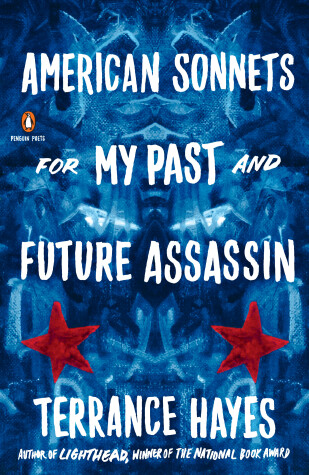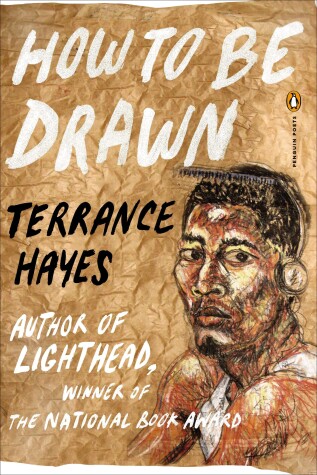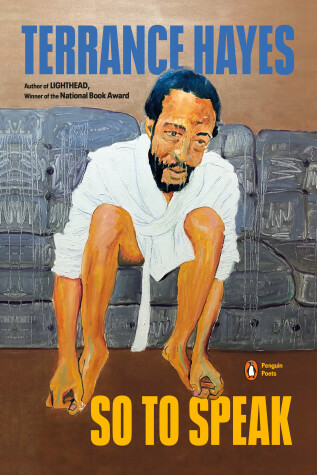Penguin Poets
3 total works
Finalist for the National Book Award and the National Book Critics Circle Award in Poetry
One of the New York Times Critics' Top Books of 2018
A powerful, timely, dazzling collection of sonnets from one of America's most acclaimed poets, Terrance Hayes, the National Book Award-winning author of Lighthead
"Sonnets that reckon with Donald Trump's America." -The New York Times
In seventy poems bearing the same title, Terrance Hayes explores the meanings of American, of assassin, and of love in the sonnet form. Written during the first two hundred days of the Trump presidency, these poems are haunted by the country's past and future eras and errors, its dreams and nightmares. Inventive, compassionate, hilarious, melancholy, and bewildered--the wonders of this new collection are irreducible and stunning.
One of the New York Times Critics' Top Books of 2018
A powerful, timely, dazzling collection of sonnets from one of America's most acclaimed poets, Terrance Hayes, the National Book Award-winning author of Lighthead
"Sonnets that reckon with Donald Trump's America." -The New York Times
In seventy poems bearing the same title, Terrance Hayes explores the meanings of American, of assassin, and of love in the sonnet form. Written during the first two hundred days of the Trump presidency, these poems are haunted by the country's past and future eras and errors, its dreams and nightmares. Inventive, compassionate, hilarious, melancholy, and bewildered--the wonders of this new collection are irreducible and stunning.
A finalist for the 2015 National Book Award and the National Book Critics Circle Award
In How to Be Drawn, his daring fifth collection, Terrance Hayes explores how we see and are seen. While many of these poems bear the clearest imprint yet of Hayes’s background as a visual artist, they do not strive to describe art so much as inhabit it. Thus, one poem contemplates the principle of blind contour drawing while others are inspired by maps, graphs, and assorted artists. The formal and emotional versatilities that distinguish Hayes’s award-winning poetry are unified by existential focus. Simultaneously complex and transparent, urgent and composed, How to Be Drawn is a mesmerizing achievement.
In How to Be Drawn, his daring fifth collection, Terrance Hayes explores how we see and are seen. While many of these poems bear the clearest imprint yet of Hayes’s background as a visual artist, they do not strive to describe art so much as inhabit it. Thus, one poem contemplates the principle of blind contour drawing while others are inspired by maps, graphs, and assorted artists. The formal and emotional versatilities that distinguish Hayes’s award-winning poetry are unified by existential focus. Simultaneously complex and transparent, urgent and composed, How to Be Drawn is a mesmerizing achievement.
A powerful, timely, dazzling new collection of poems from Terrance Hayes, the National Book Award–winning author of Lighthead—to be published simultaneously with his latest work of literary criticism, Watch Your Language
The three sections of Terrance Hayes’ seventh collection explore how we see ourselves and our world, mapping the strange and lyrical grammar of thinking and feeling. In “Watch Your Mouth,” a tree frog sings to overcome its fear of birds; in “Watch Your Step: The Kafka Virus,” a talking cat tells jokes in the Jim Crow South; in “Watch Your Head,“ green beans bling in the mouth of Lil Wayne, and Bob Ross paints your portrait. On the one hand, these fabulous fables, American sonnets, quarantine quatrains, and ekphrastic do-it-yourself sestinas animate what Toni Morrison called “the writerly imagination of a black author who is at some level always conscious of representing one’s own race.” On the other hand, these urgent, personal poems contemplate fatherhood, history, and longing with remarkable openness and humanity. So To Speak is the mature, restless work of one of contemporary poetry’s leading voices.
The three sections of Terrance Hayes’ seventh collection explore how we see ourselves and our world, mapping the strange and lyrical grammar of thinking and feeling. In “Watch Your Mouth,” a tree frog sings to overcome its fear of birds; in “Watch Your Step: The Kafka Virus,” a talking cat tells jokes in the Jim Crow South; in “Watch Your Head,“ green beans bling in the mouth of Lil Wayne, and Bob Ross paints your portrait. On the one hand, these fabulous fables, American sonnets, quarantine quatrains, and ekphrastic do-it-yourself sestinas animate what Toni Morrison called “the writerly imagination of a black author who is at some level always conscious of representing one’s own race.” On the other hand, these urgent, personal poems contemplate fatherhood, history, and longing with remarkable openness and humanity. So To Speak is the mature, restless work of one of contemporary poetry’s leading voices.


